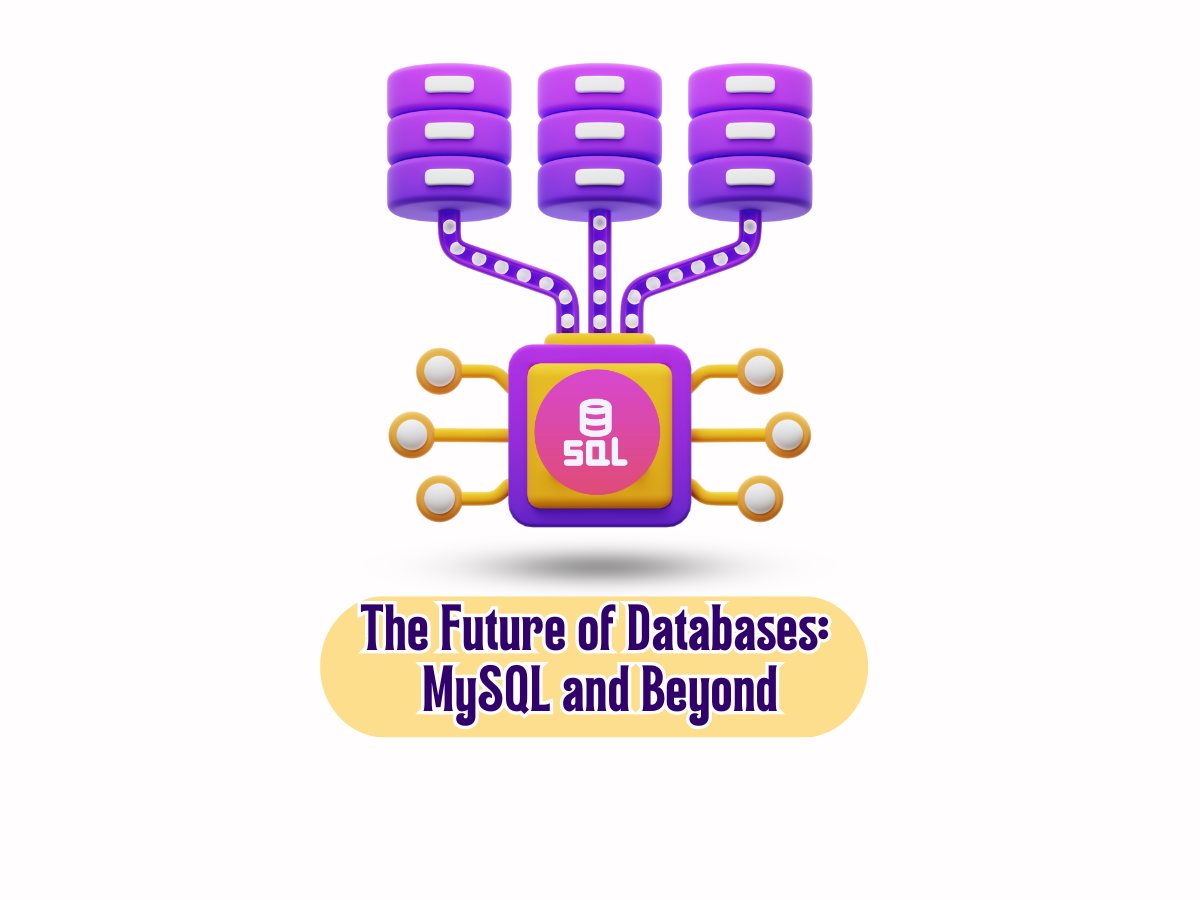
The Future of Databases: MySQL and Beyond
In the digital age, databases serve as the backbone of countless applications, powering everything from websites and e-commerce platforms to mobile apps and enterprise systems. MySQL, an open-source relational database management system (RDBMS), has long been a cornerstone of the database landscape, renowned for its reliability, performance, and ease of use. However, as technology continues to evolve at a rapid pace, the future of databases extends beyond traditional RDBMS solutions like MySQL. In this article, we’ll explore the future of databases, including the evolution of MySQL and emerging trends shaping the database landscape.
1. Evolution of MySQL:
MySQL has evolved significantly since its inception in the mid-1990s, transitioning from a small-scale database solution to a robust and feature-rich platform capable of handling complex workloads and high-traffic applications. Over the years, MySQL has seen numerous advancements and improvements, including:
– Scalability Enhancements: MySQL has introduced features such as sharding, replication, and clustering to improve scalability and support distributed architectures.
– Performance Optimizations: Optimizations in query execution, indexing, and caching have enhanced MySQL’s performance, enabling faster data retrieval and processing.
– High Availability: MySQL now offers built-in support for high availability features such as failover, automatic failback, and data redundancy, ensuring continuous operation and data integrity.
– Compatibility and Interoperability: MySQL is compatible with a wide range of programming languages, frameworks, and platforms, making it a versatile choice for developers and organizations.
Despite its continued relevance and widespread adoption, MySQL faces challenges in keeping pace with the evolving demands of modern applications, particularly in terms of scalability, performance, and support for new data types and workloads.
2. Emerging Trends Shaping the Future of Databases:
As technology evolves and new challenges emerge, several trends are shaping the future of databases, including:
– NoSQL Databases: NoSQL databases, such as MongoDB, Cassandra, and Redis, have gained popularity for their ability to handle unstructured and semi-structured data, as well as their scalability and flexibility in distributed environments. Applications with large data volumes, real-time analytics, and high concurrency benefit from NoSQL databases. They handle these demands effectively.
– Cloud-Native Databases: Cloud-native databases, such as Amazon Aurora, Google Cloud Spanner, and Microsoft Azure Cosmos DB, are designed specifically for cloud environments, offering features such as auto-scaling, multi-region replication, and serverless architecture. Cloud-native databases provide flexibility, scalability, and resilience, enabling organizations to deploy and manage databases with ease in cloud environments.
– Big Data and Analytics: With the proliferation of data-driven applications and the rise of big data technologies, databases optimized for analytics and data processing, such as Apache Hadoop, Apache Spark, and Google BigQuery, are becoming increasingly important. These databases offer capabilities for real-time analytics, machine learning, and predictive modeling, empowering organizations to derive insights from large and diverse datasets.
– Graph Databases: Graph databases, such as Neo4j and Amazon Neptune, are designed to handle interconnected data and relationships, making them ideal for applications such as social networks, recommendation engines, and fraud detection systems. Graph databases excel in modeling complex relationships and traversing graph structures efficiently, enabling advanced graph analytics and pattern recognition.
3. The Future of MySQL and Beyond:
Despite the emergence of new database technologies and trends, MySQL remains a widely used and trusted database solution for a variety of applications and use cases. Looking ahead, the future of MySQL is likely to be shaped by innovations in areas such as:
– Scalability: MySQL will continue to evolve to meet the scalability requirements of modern applications, with enhancements in areas such as distributed architectures, horizontal scaling, and multi-master replication.
– Performance: MySQL will focus on improving performance through optimizations in query processing, indexing, caching, and storage engine efficiency, enabling faster data access and processing.
– Compatibility and Interoperability: MySQL will maintain its commitment to compatibility and interoperability with existing standards, protocols, and platforms, ensuring seamless integration with third-party tools and technologies.
In addition to MySQL, organizations may leverage a combination of database technologies and platforms to address diverse requirements and use cases, including NoSQL databases for unstructured data, cloud-native databases for scalability and flexibility, and big data technologies for analytics and insights.
Conclusion of The Future of Databases
The future of databases is dynamic and evolving, driven by advancements in technology, changing business requirements, and emerging trends in data management and analytics. While MySQL continues to be a popular choice for many applications, the database landscape is diverse and multifaceted, with a wide range of options available to developers and organizations. By embracing innovation, staying abreast of emerging trends, and leveraging the strengths of different database technologies, organizations can build robust and scalable data infrastructure to support their evolving needs and drive business success in the digital age.







